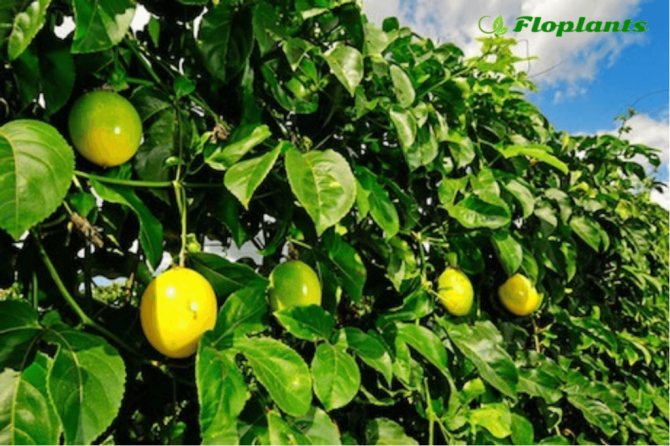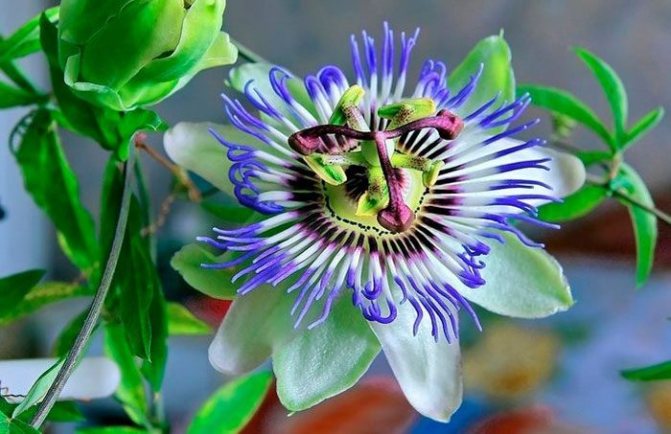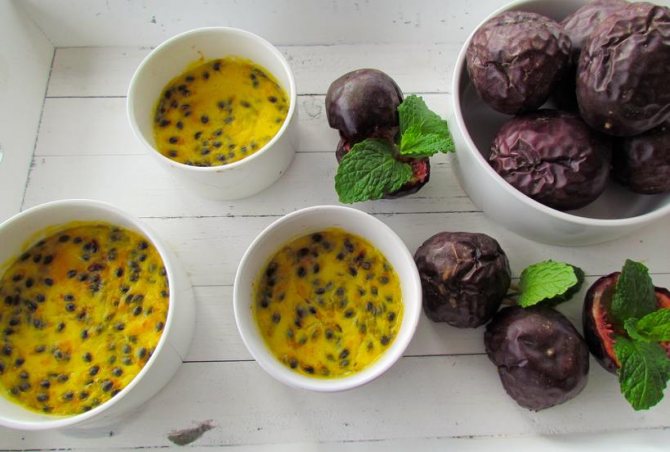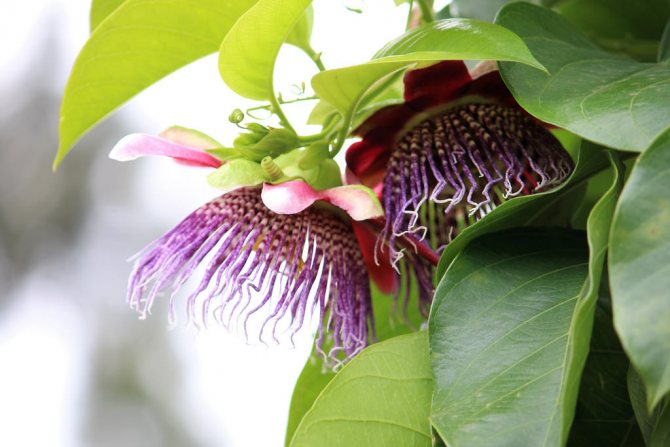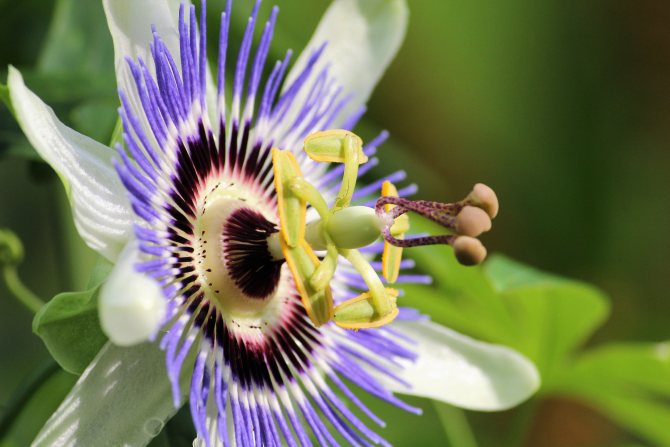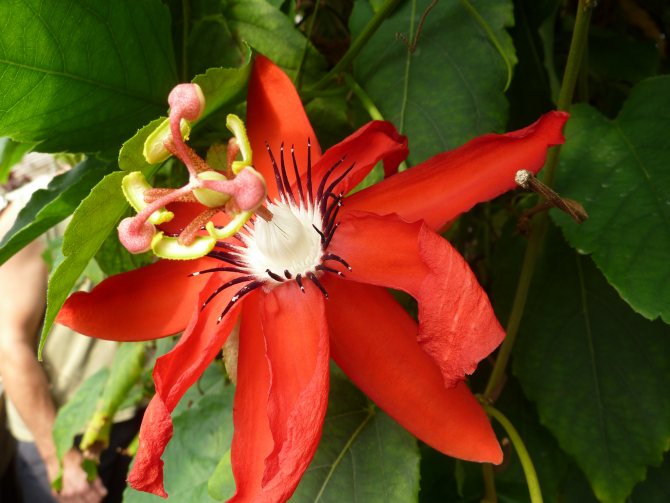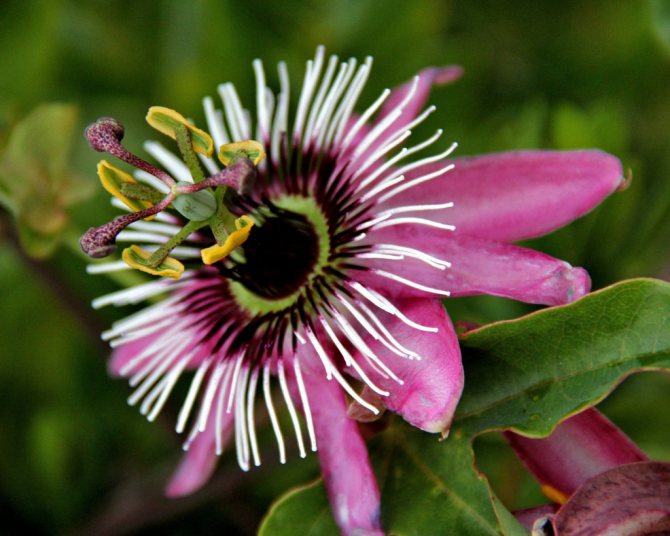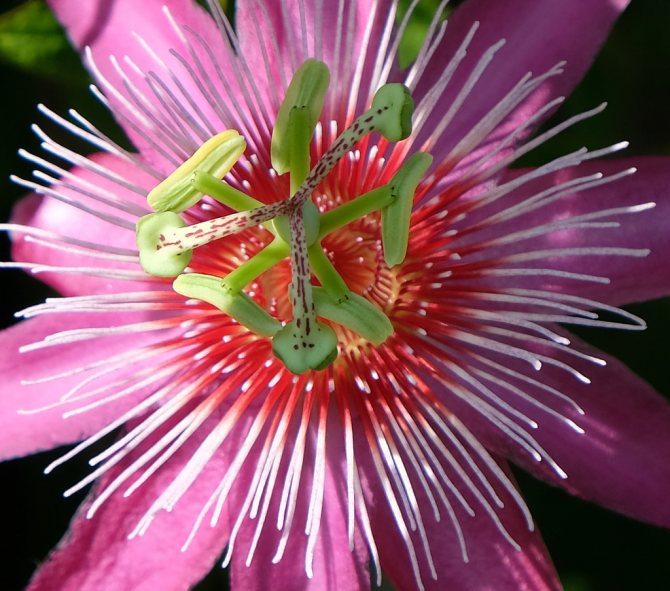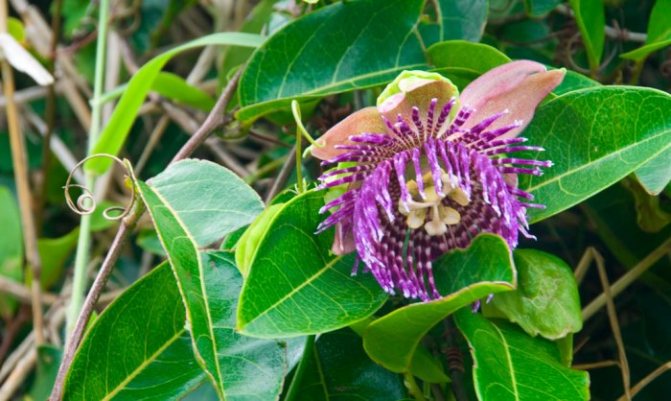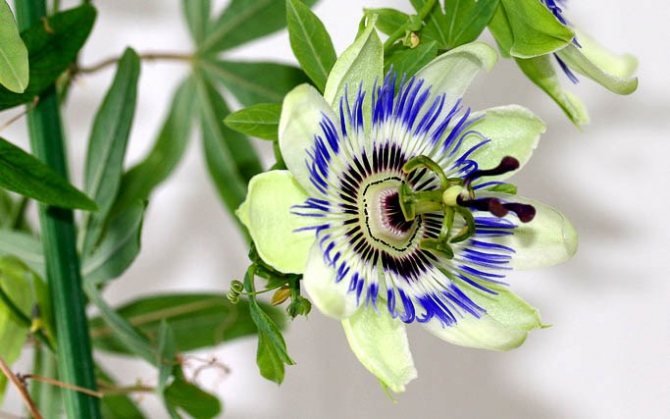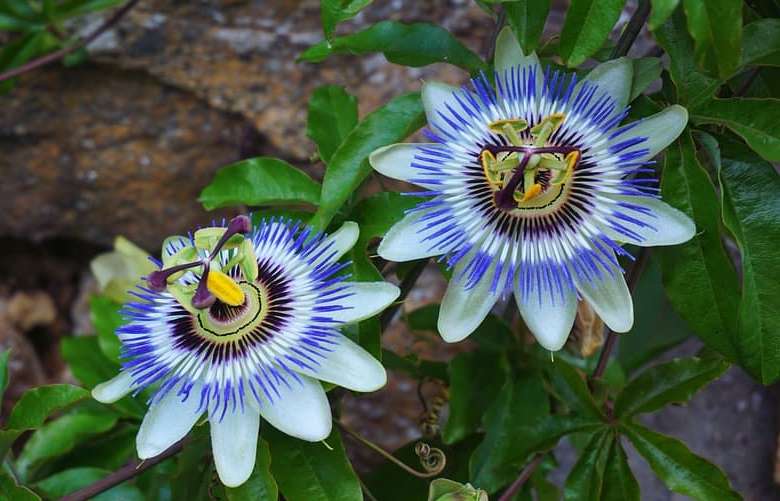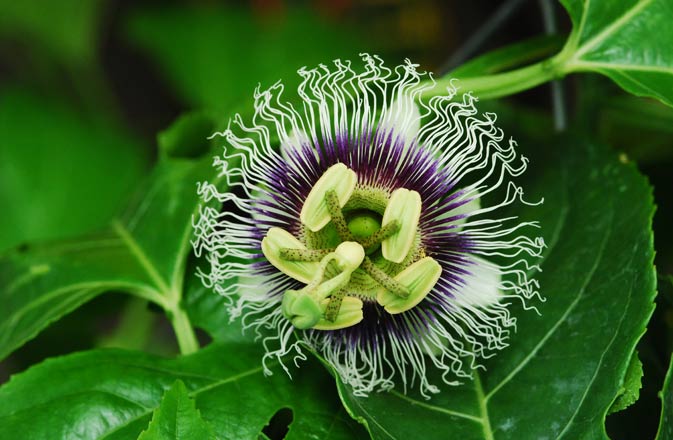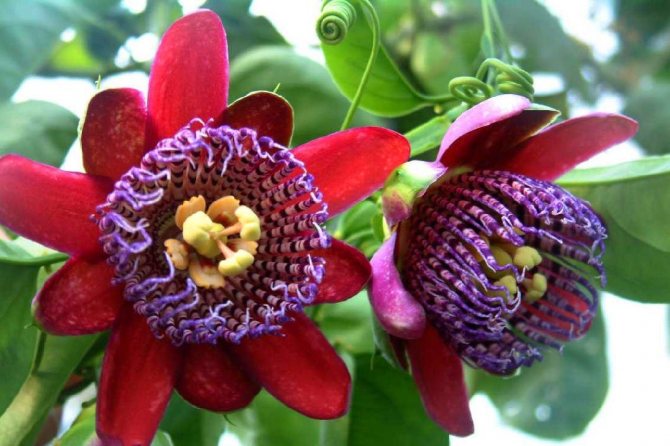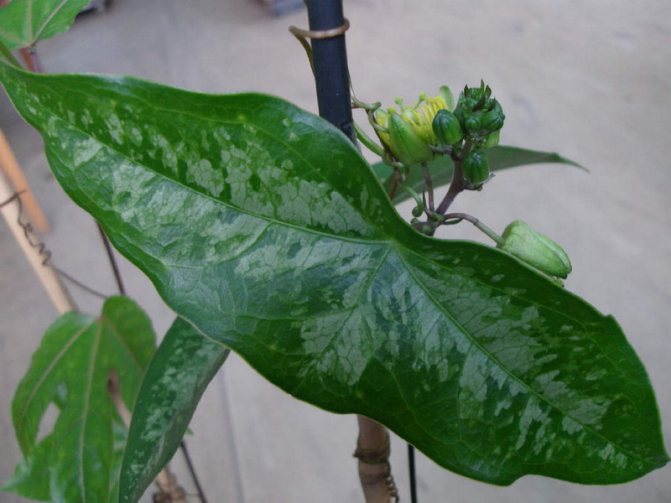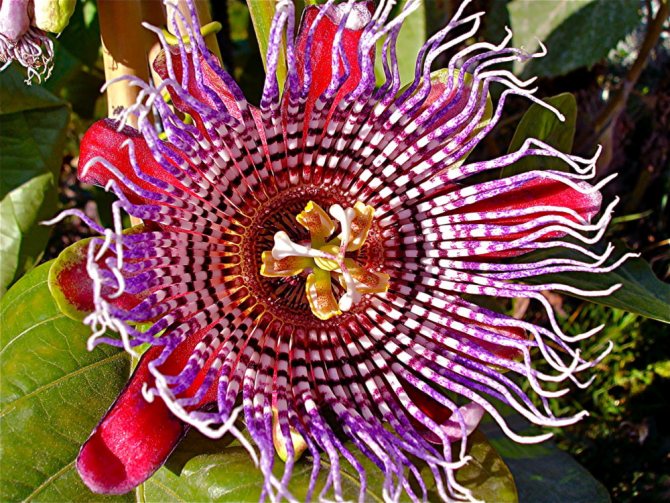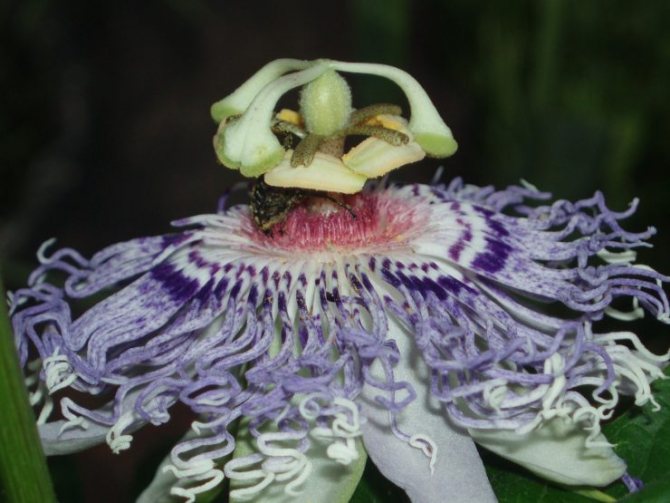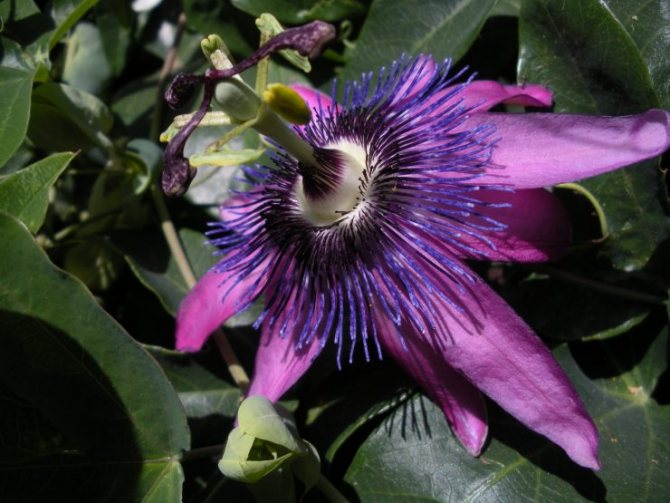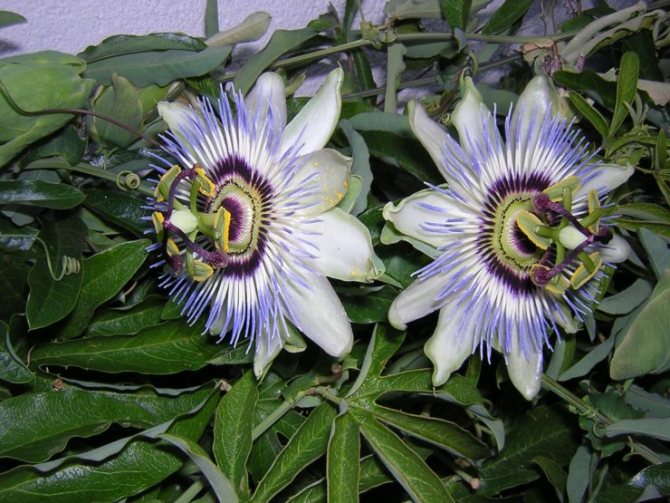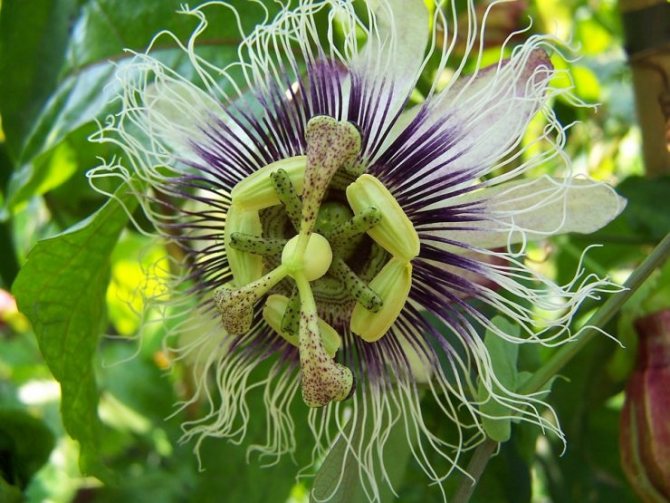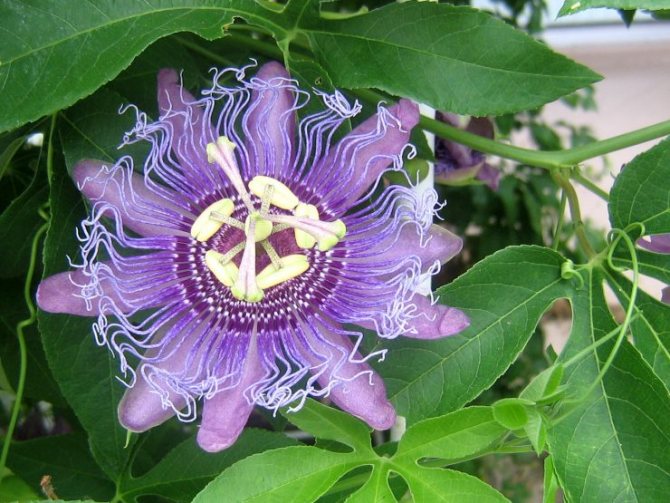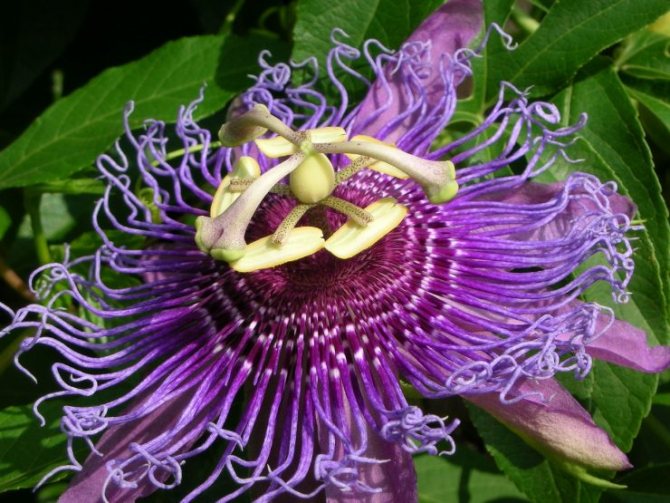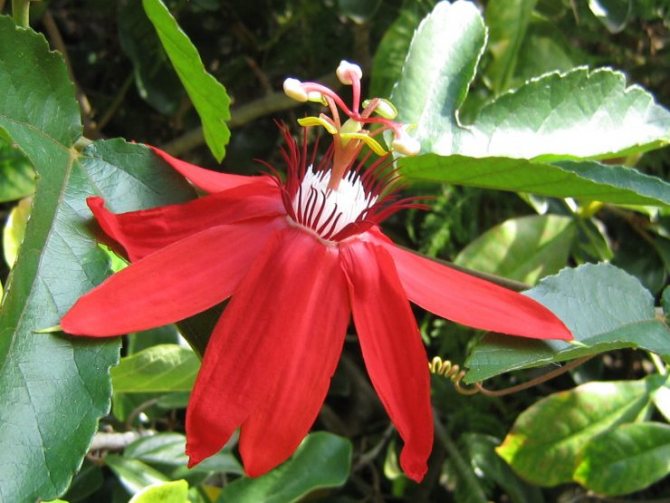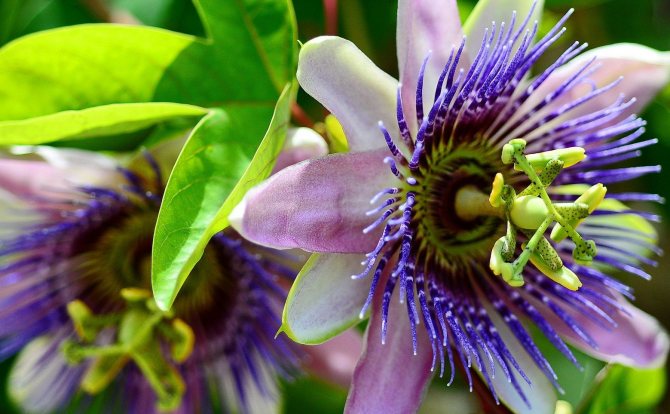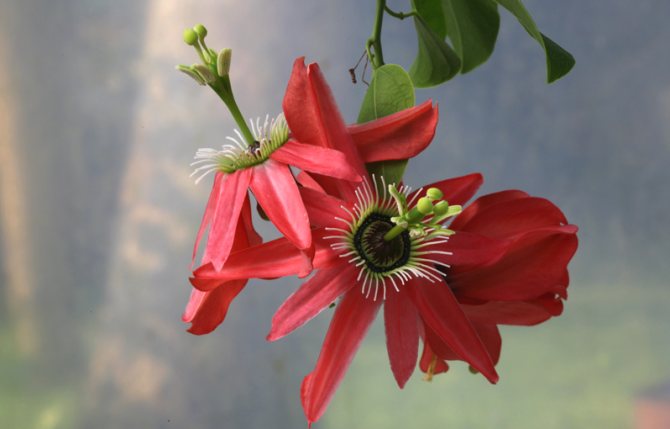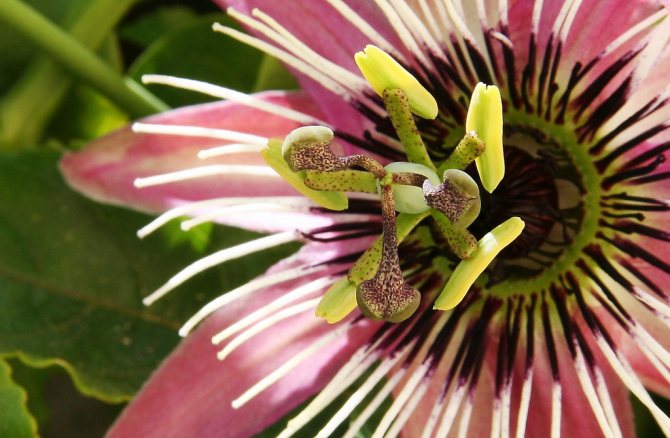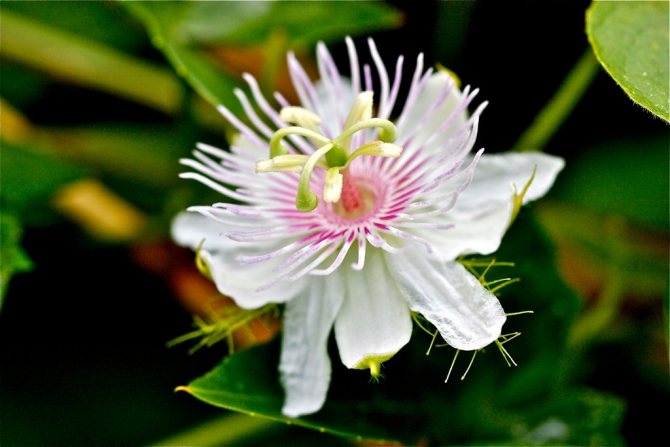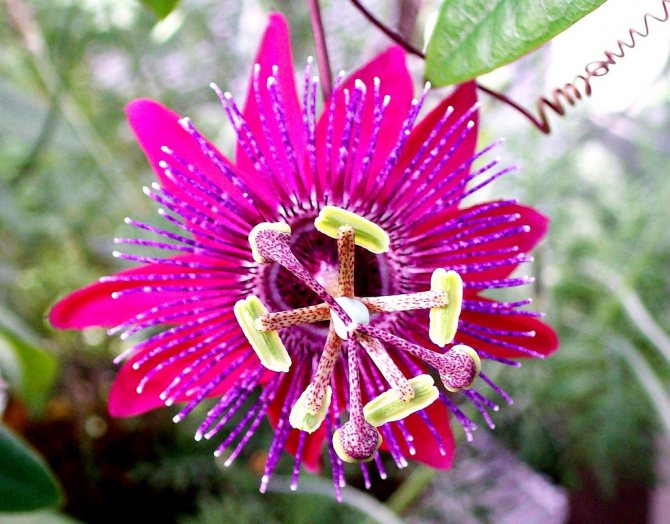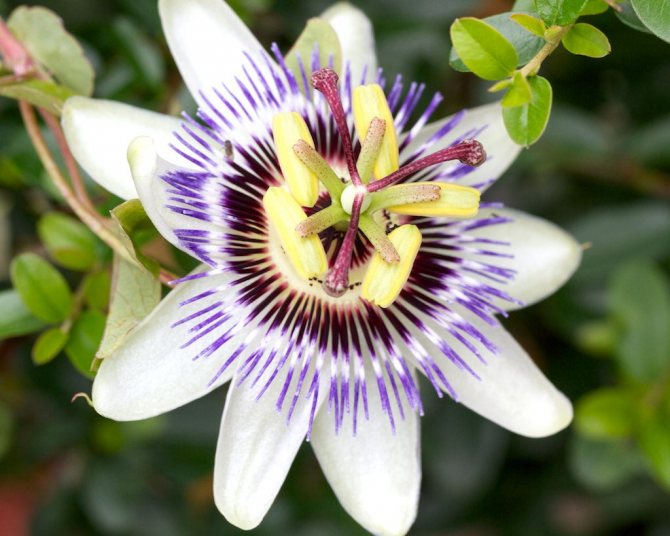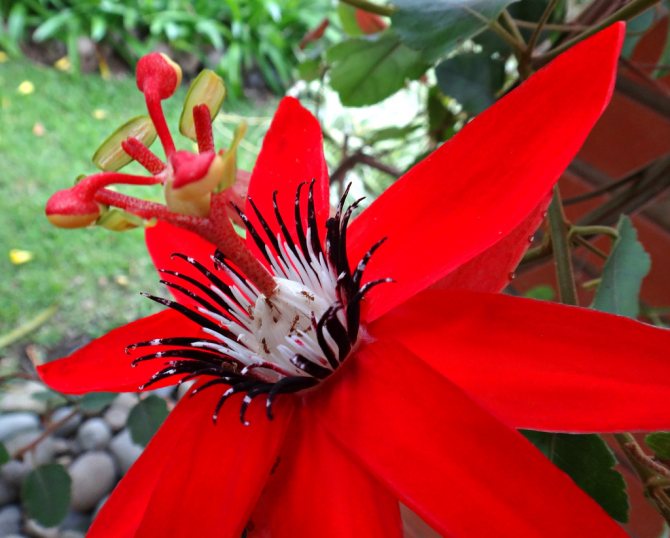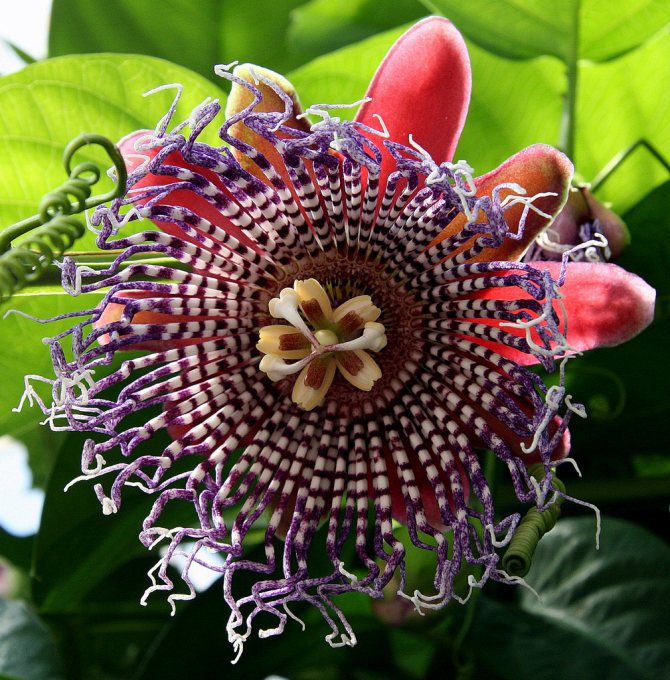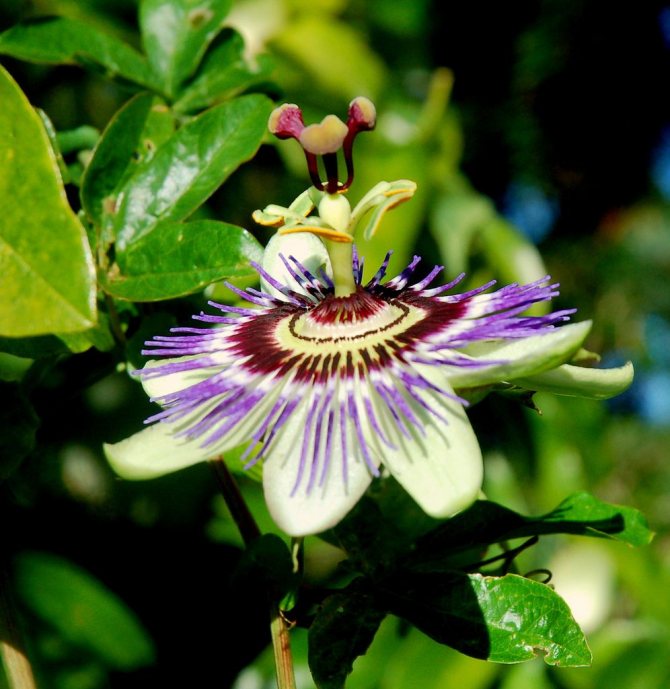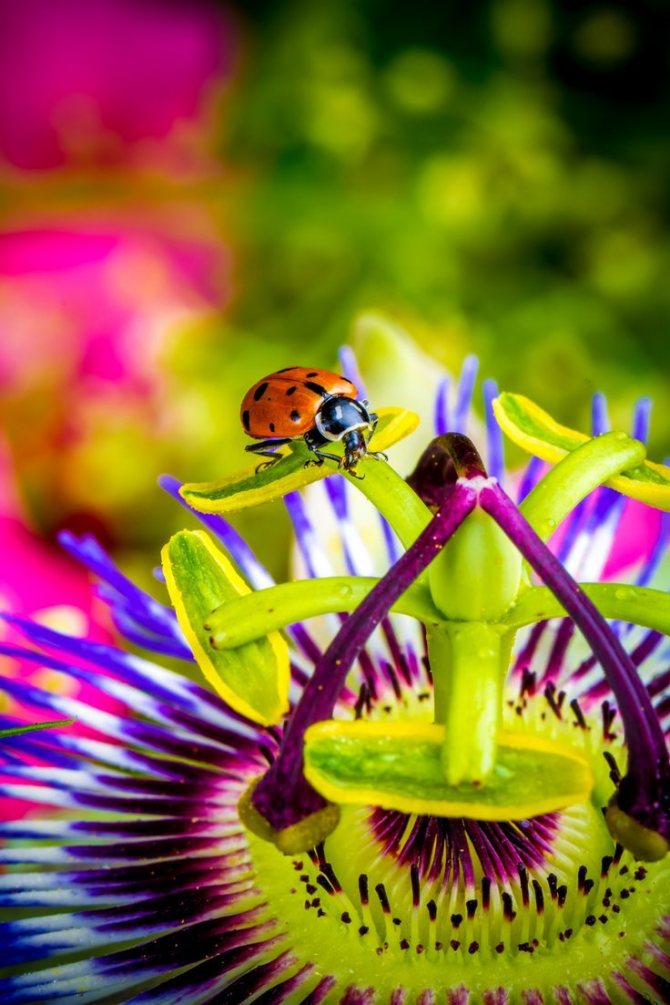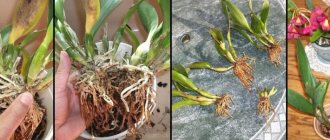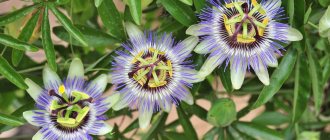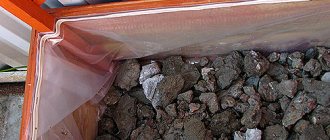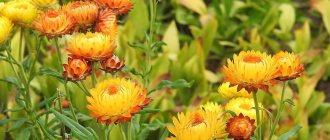Passionflower is not only a beautiful decorative flower that is grown at home, but also a very useful plant.
Passionflower can be a decoration for any home or garden. This unusual vine is quite easy to cultivate, has a unique decorative effect and produces excellent-tasting fruits.
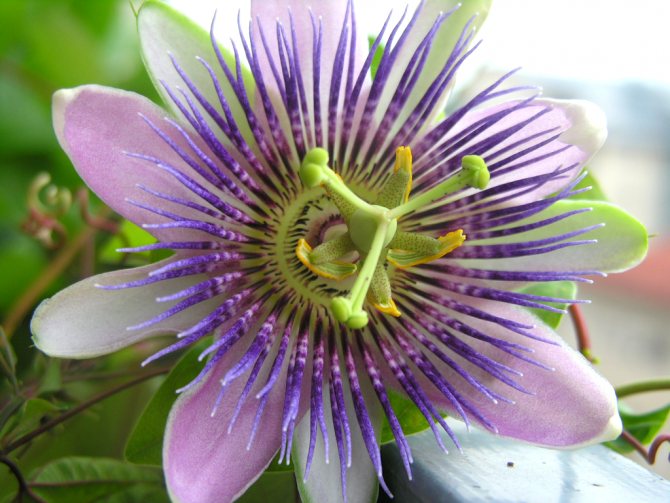
Passionflower has the same exotic look as the nature of those parts where it originated
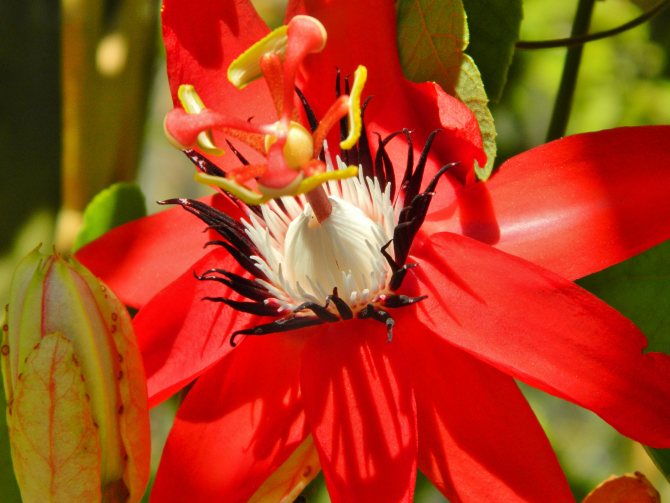

The luxury and beauty of this flower will not leave anyone indifferent.
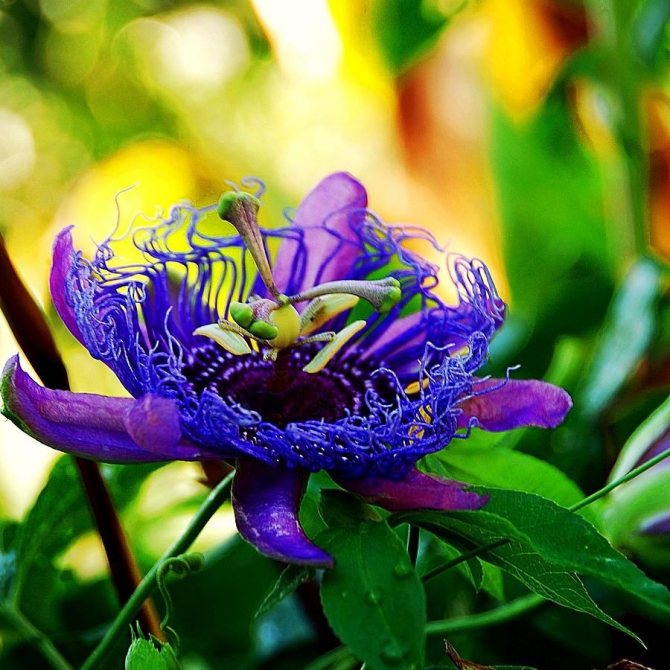

Dazzling purple passionflower
Along with its unique decorativeness, homemade Passionflower, just like gardening, conquers flower growers with its unpretentiousness and ease of cultivation. This actively growing liana has several names that are probably familiar to you - passion flower, passion fruit, cavalier star. Passionflower received its bright enough names for a complex, very unusual flower.
Its structure is so original that, having seen it once, it is already impossible to forget it or confuse it with another. The sepals arranged with a star are decorated with a rim of thin splinters, and above all this splendor, stamens rise, surrounding an unusual pistil.
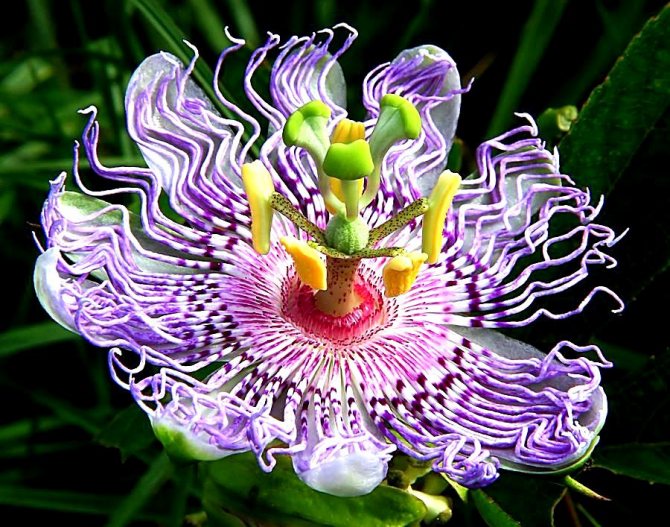

In passionflower, nature has combined a bizarre shape and incredible color
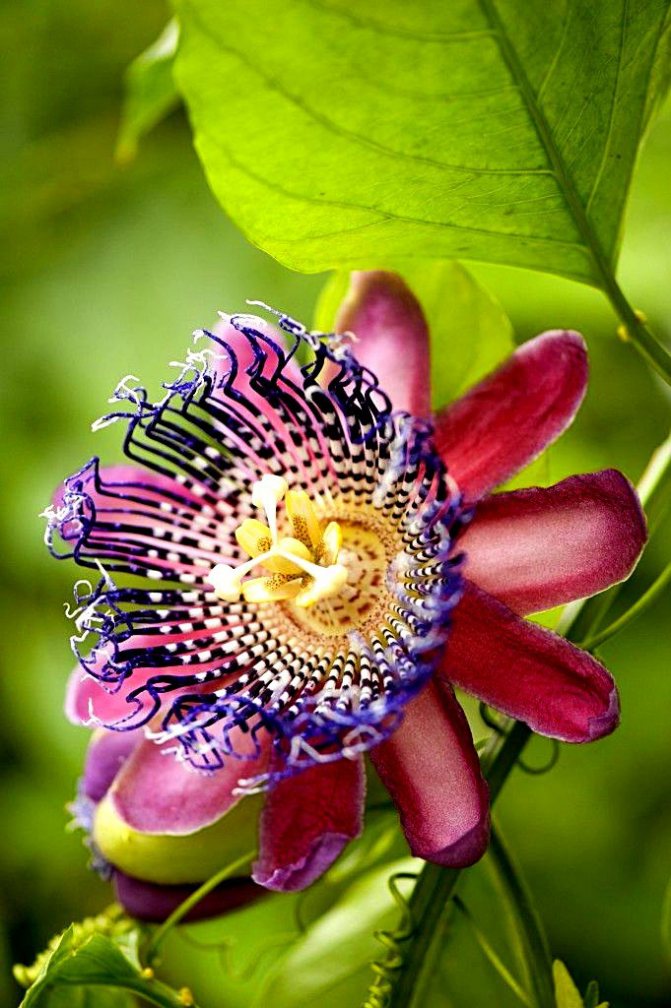

It is not for nothing that the name of the plant is translated as the Flower of Passion - it attracts and tempts with its extraordinary appearance
Growing up several meters, the liana is able to cover the walls of a multi-storey building or twine around a large tree. The blooming Passionflower is especially beautiful - the flower of each species has a completely unique color, many of them have a noticeable aroma.
Numerous rather large flowers make it uniquely beautiful, and round fruits of bright color are quite pleasant to the taste and suitable for eating. In addition to its decorative value, passionflower has medicinal uses, and the pulp of its fruit is used in cooking and for the preparation of soft drinks.
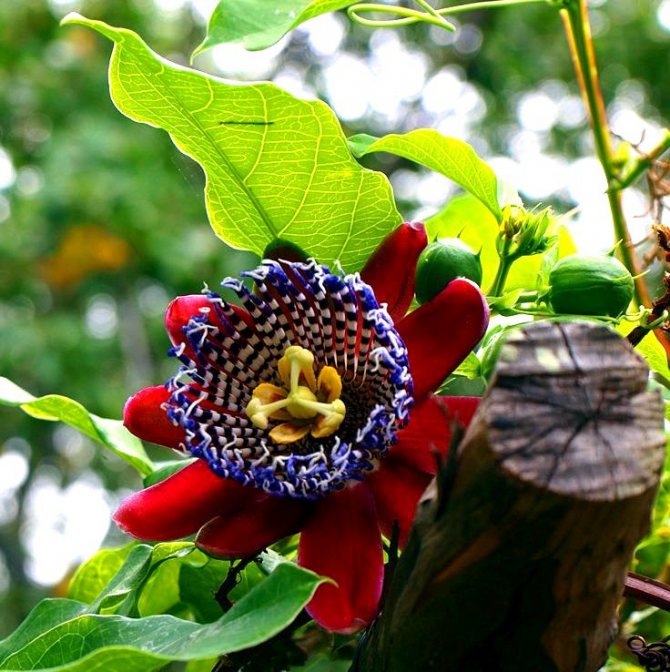

Luxurious passion flower - the crown of Mother Nature's creation
Description of the appearance of passionflower
Most species are lianas, reaching lengths of 6 - 8 meters. Leaves are simple or trifoliate, light green in color. Large flowers emerge from the leaf sinuses. They have a very unusual structure. One flower combines many petals of different shapes, making it look like an order star. And the accreted stamens resemble a crown of thorns, for which it received its second name - Passionflower.
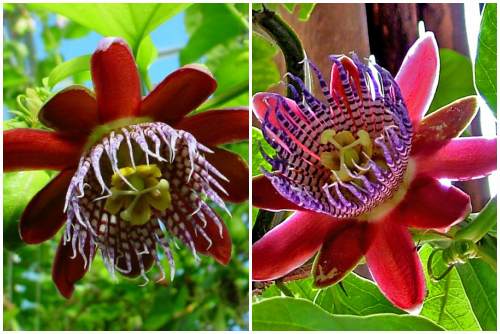

One of the amazing features of passion flower is the presence of special glands that attract ants. In their natural environment, ants protect the host plant from butterfly caterpillars, natural pests of passiflora. The shape and location of the glands differs depending on the species.
Liana blooms in summer, from July to October. The blossoming buds do not last long, but due to their large number and the constant opening of new corollas, the flowering period is long.
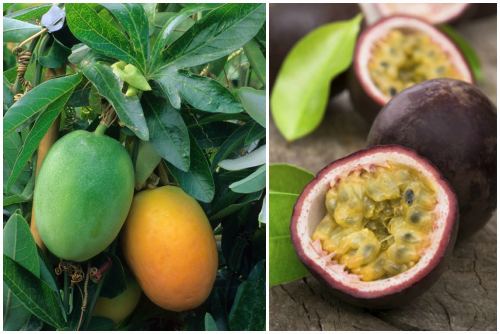

The bright yellow fruits can be eaten, therefore it is also called "Edible Passionflower". The fruit is known as Passion Fruit.
Varieties of the "flower of suffering"
Only an approximate number of species is known - 500. Plants grow in places that are considered inaccessible.
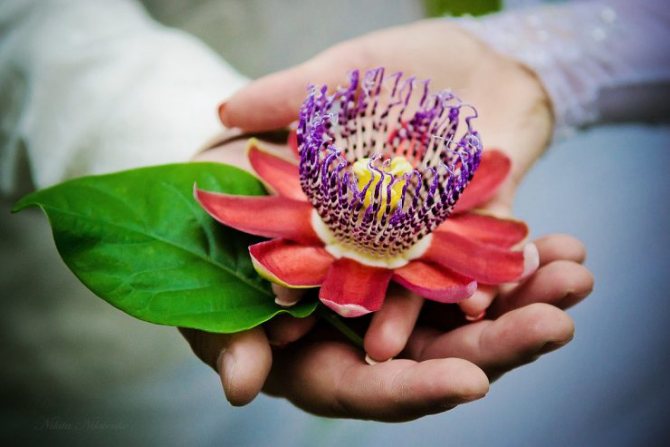

Common types:
Giant. Large leaves with d = 20 cm.
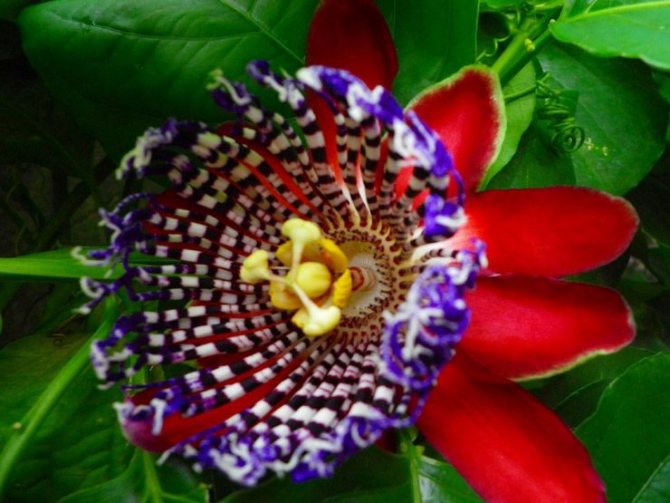

Incarnate. It has flowers painted in different shades of white, gray or purple. The plant is frost-resistant.
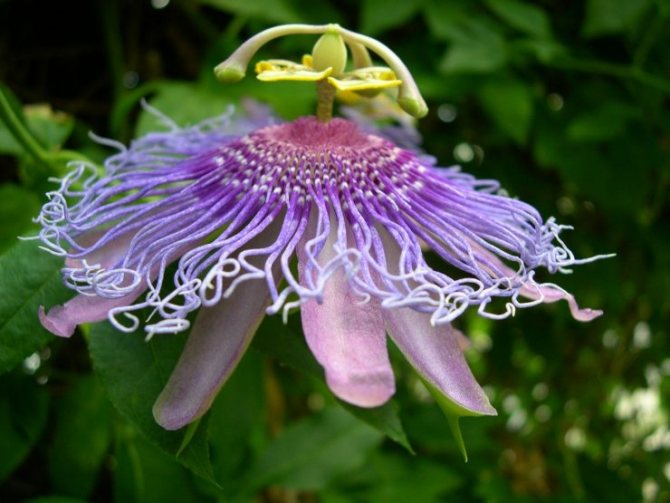

Banana. Passiflora flowers with d = 12 cm have a reddish tint. The edible fruit can be consumed. They are not eaten raw, they make delicious jam.
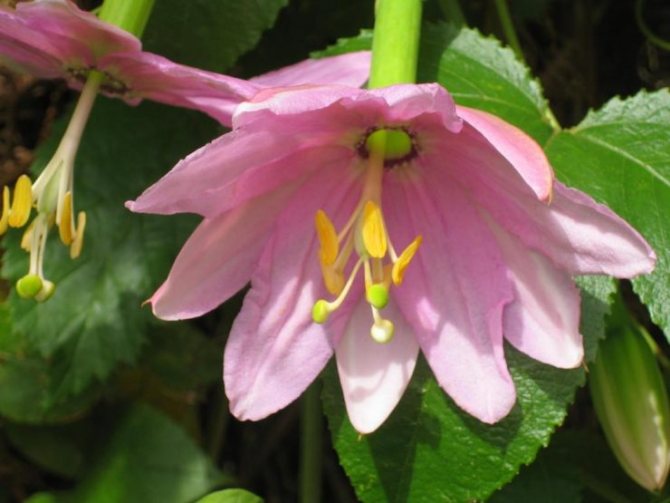

Winged. Orange flowers have long stamens. The large fruits give off a pleasant aroma.
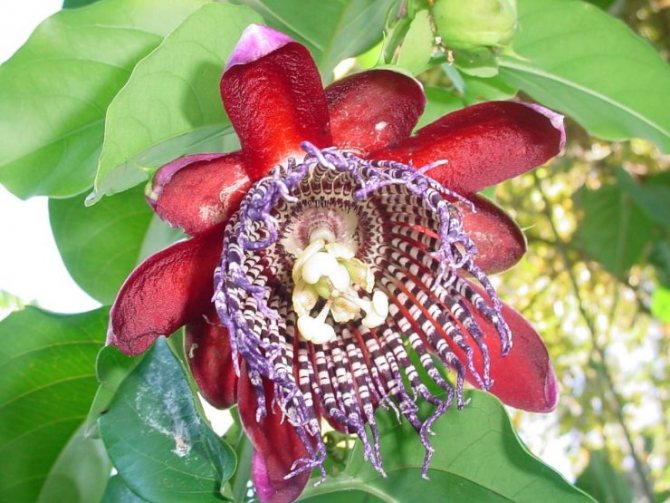

Blue. It is characterized by flowers of a lilac shade with a diameter of 10 cm. The plant bears fruit - orange berries.
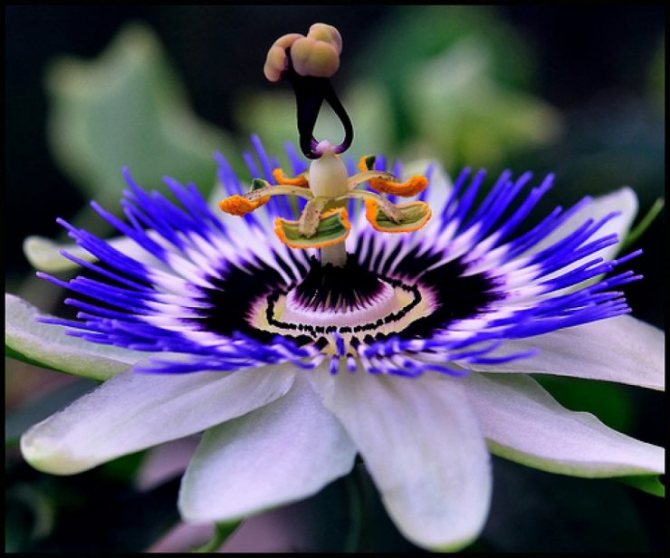

Laurel. The leaves resemble laurel, but their size is much larger.
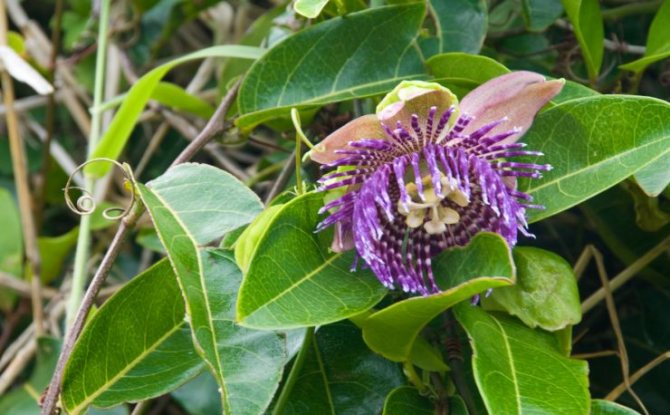

The most common types and varieties of passion flower
Some types of passion fruit can be grown at home. Read more in this article.
Sweet granadilla
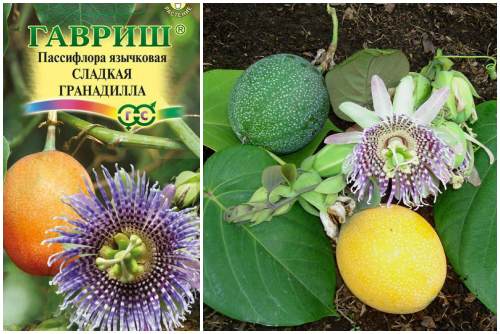

Other names - "Passionflower reed" or "Passionflower reed". Shoots are able to grow up to 3-4 meters during the summer season.
It is used for fruit production as well as vertical gardening. Cultivated on tropical islands: Hawaii, Haiti, Jamaica. Natural habitat - Mexico, Bolivia.
Passionflower blue
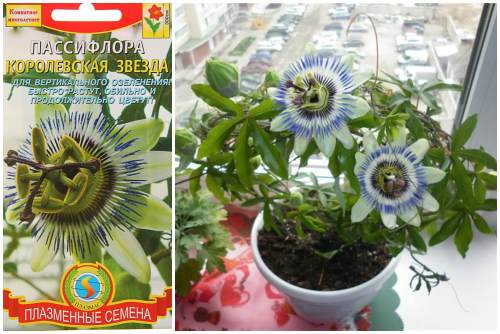

Her homeland is Brazil. The color of the petals ranges from gray to cyan or magenta. The most common variety is the Royal Star (Cavalier Star).
Blue Cassiopeia
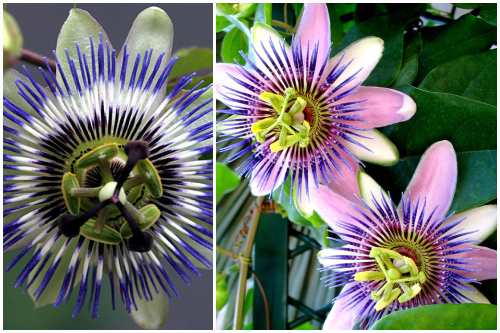

One of the varieties of blue passionflower.
Giant granadilla
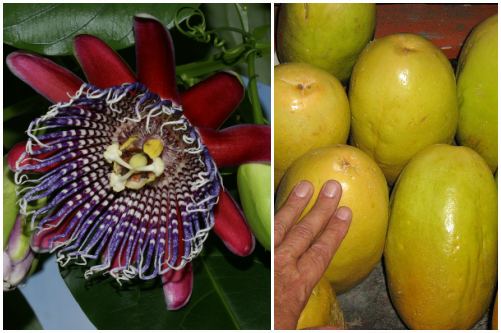

The liana is striking in its size - it stretches up to 45 meters in length, twisting around the support. The berry is also gigantic, compared to other types of passionfruit: 10 - 30 cm. Due to its size, it got its name. Lives in South America, Malaysia, Africa, Australia.
Passionflower volatile
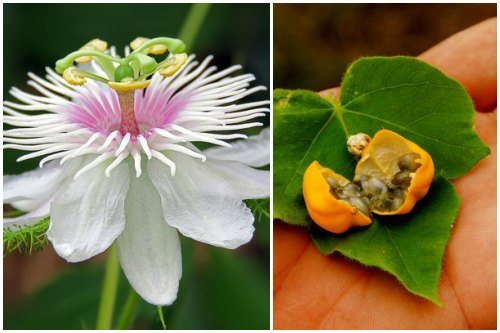

It has small, very decorative flowers. This beautiful plant has another name - "Stinky Passion Flower". This, rather unpleasant name, he received because of the unpleasant smell that stands out if you rub its leaves between your fingers.
Passionflower meat - red
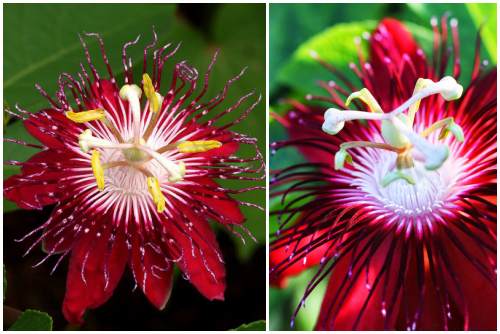

This species is very moody. The stems are covered with fine hairs that resemble a downy; the leaves are oval, with a jagged edge. The flowers are very bright, crimson red.
Growing passionflower at home
The plant is quite capricious and requires compliance with certain conditions of detention. The most undemanding to care for is blue passionflower, it can be recommended to novice amateurs. Some species will cause difficulties even for experienced flower growers.
Lighting and temperature control
Liana prefers bright lighting, it can even tolerate the open sun with ease. Therefore, at home, she is assigned the lightest window sill, supplemental lighting with lamps, if necessary. Light partial shade is not harmful, but negatively affects flowering.
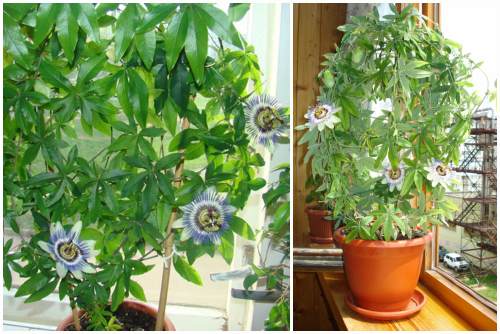

- In the summer, it is very desirable to take it out into the open air - a balcony or terrace.
- With the onset of winter, passion flower is brought into the room and provide it with a cool winter. The temperature is maintained at a level of 10 - 12 C, preventing a cold snap below 7 C.
- Sometimes the flower sheds its leaves. Do not be afraid of this - she is able to overwinter in a leafless state. In the spring, after pruning, it will grow back the aerial part.
- During the growing season, the most comfortable temperature range is from 18 to 27 C.
Watering
Passionflower is watered abundantly, the soil surface must be constantly moist. But stagnation of water is not permissible - the plant is provided with high-quality drainage.
Soil composition, replanting
Since the culture is powerful and tall, planting is carried out in a fertile soil mixture of the following composition:
- Sod land;
- compost;
- humus;
- peat;
- coarse sand.
All components are taken in equal amounts.
Young vines are transplanted annually. As soon as the next pot reaches, about 25 cm in diameter, you can limit yourself only to replacing the topsoil.
Growing kit
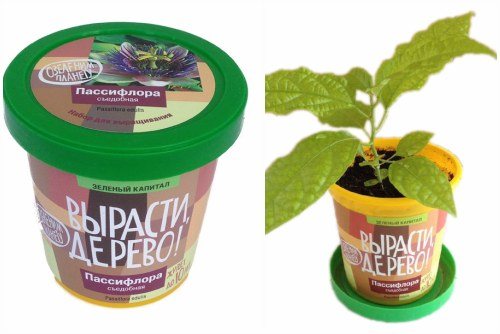

In addition to seeds, specialty stores offer a kit for growing passionflower at home. It consists of a pot, special soil and instructions for use. The manufacturer promises that the seedlings will appear in 1 - 2 months.
Pruning
Shoots grow well, therefore they are pruned every year, during transplantation. The central lashes are shortened, leaving 20 - 30 cm in length, the side ones - about 10 - 15 cm.
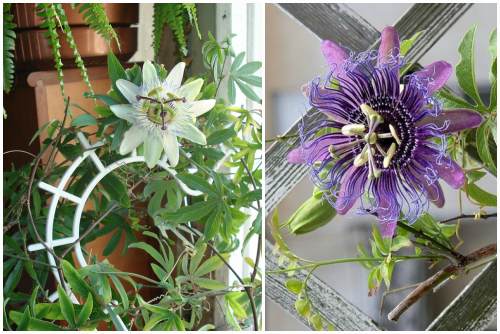

Shoots are provided with support. They should not be allowed to thicken, otherwise the intensity of flowering will decrease.
Flowering, pollination
The first flowers appear only on young shoots already in the second year after planting.
To obtain a harvest, if it is not possible to take the plant out into the open air, it is necessary to carry out pollination by hand.
Reproduction of passionflower
Passion flower is propagated by both cuttings and seeds.
Propagation by cuttings
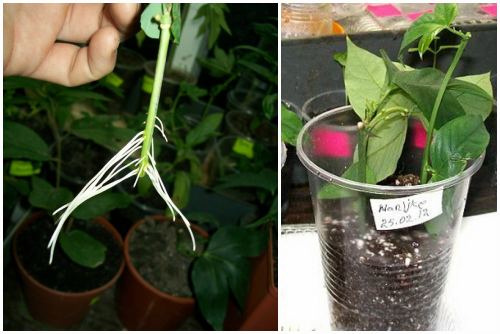

Cutting is the easiest way.
- Shoots are cut into pieces, 10 - 12 cm long.
- They are rooted in soil, consisting of a mixture of peat and sand, at a temperature of 18 - 22 C.
- Roots appear in 4 to 5 weeks. Then the shoots are seated in pots, 9 - 12 cm in diameter.
Seed propagation
Seed breeding presents certain difficulties. One of the biggest challenges is getting fresh seeds. One year after harvest, the germination rate drops to only 2%.
The outer shell of the seeds is very dense; without pretreatment, they can germinate up to a year.
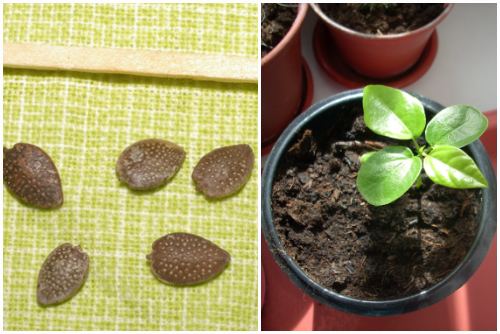

Ways to speed up the germination process:
- Soak in growth promoters, then plant in nutrient mixture and provide warm, bright, bottom-heated place. Maintain soil temperature at 28-35 C.
- Daily temperature fluctuations will also help speed up the process. For this, the seeds sown in the usual way are kept at 30 C during the day, and at night they are lowered to 10 C. Experts promise that this option even works on seeds with poor germination.
- Scarification of the shell - a dense skin can be lightly rubbed with sandpaper, breaking its integrity. Moisture will penetrate into the seed faster and germination will occur earlier.
- Soaking for a day in orange or lemon juice.
How to care for seed-grown passionflower
Seedling care is as follows:
- Young plants are provided with the most illuminated place.
- Water often, but little by little, to prevent stagnant water.
- The vine is guided along the support, this stimulates the formation of the central skeletal branch.
- Then a couple of strong shoots are selected and attached to the support.
- From the second year, the lashes begin to be cut, forming a liana - the central ones are up to 30 cm, and the side ones are up to 10 cm.
- Flower buds are laid on young branches of the current year.
- Culture blooms in the fourth year of life. If this does not happen, then it can be cut and planted again. Plants grown from cuttings bloom faster.
Despite the difficulties of cultivation, it is quite possible to grow passionflower at home, and even get a harvest.
You can learn how to grow passionflower from seeds in the following video.
Passion fruit crown formation:
Vine pruning is usually carried out in the spring, if a transplant is performed, then the procedures are combined. Cut branches that exceed 50 cm by half, or 13, then stimulates active branching. If the plant has aged and many bare branches have appeared, they are pruned in parts, leaving fragments at least 5 cm long. Pruning in parts means that all bare branches are not removed at once in one go, since such radical pruning can lead to stress and weakening of the plant. Pruning is carried out in stages, allowing the passion fruit to grow new shoots and foliage.
For the normal development of passion fruit, support from rings, ladders or stretched trellises is required.
